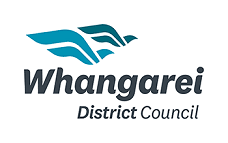Rises in construction offset falls in media and tourism
An increased number of jobs in the construction industry offsets losses in media and tourism related industries over 2020, Stats NZ said today.
“Although overall employment is similar to a year ago, looking at movements by industry shows how New Zealand jobs have changed in response to COVID-19 and its restrictions,” labour market manager Andrew Neal said.
“A similar uneven effect was also seen in the monthly employment indicator for December 2020.”
Jobs up in December, but annual growth slows has more detail from the monthly employment indicator.

Nationally, the household labour force survey (HLFS) showed an annual increase of 21,000 people whose main job was in the construction industry, up to 278,300 people in the December 2020 quarter. Of this increase, 15,200 were men and 5,800 were women.
“The strong growth in the construction industry across 2020 reflected an increase of 13,200 people employed in construction services,” Mr Neal said.
“This includes people working in areas such as plumbing and electrical services, roofing, and concreting.”
This increase was in line with the quarterly employment survey (QES), which showed the number of filled jobs in construction rose by 17,600 over the year, largely from residential building construction and building structure services. The increase in construction was the main driver in the national increase of 18,400 filled jobs.
The QES measures the number of filled jobs from a business’s perspective, while HLFS measures the number of people employed from an individual’s perspective.
“Delays in building projects due to lockdown restrictions along with more building consents issued after the lockdown may have increased demand for workers to meet higher construction demand,” Mr Neal said.
Building consents issued: November 2020 has more details.
While the construction industry saw strong increases in the year to the December 2020 quarter, this was partially offset by fewer people employed in media and key tourism related businesses.
In the information media and telecommunications industry, the number of people employed decreased annually by 9,600, from 43,000 to 33,400. Within this industry, there were employment decreases in areas like broadcasting, and library and other information services.
Annually, 13,300 fewer women were employed in the professional, scientific, technical, and administrative and support services industry. Of this decrease, 11,400 came from the administrative and support services industry, which includes 5,700 from travel agency services.
This was similar to the QES, which showed a decrease of 9,200 filled jobs from both women and men in the professional, scientific, technical, and administrative and support services industry, reflecting decreases in travel agency services and employment services (for example, labour hire firms).
The second largest decrease in the QES was the transport, postal, and warehousing industry, which includes air and space transport and road passenger transport companies, both of which are tourism-characteristic industries.
Source: Stats NZ




